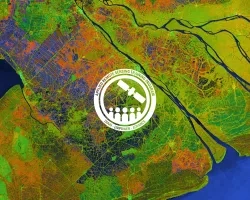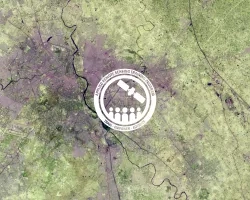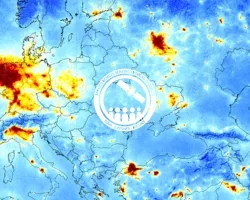Description
Freshwater habitats play an important role in ecological function and biodiversity. Remote sensing of these ecosystems is primarily tied to observations of the drivers of biodiversity and ecosystem health. Remote sensing can be used to understand things like land use and land cover change in a watershed, habitat connectivity along a water body, water body location and extent, and water quality parameters. This webinar series will guide participants through using NASA Earth observations for habitat monitoring, specifically for freshwater fish and other species. This training will also provide a conceptual overview, as well as the tools and techniques for applying landscape environmental variables to genetic and habitat diversity in species.
Relevant UN Sustainable Development Goals: 6.6, 14.2
By the end of this training, attendees will:
- Understand the limitations of using remote sensing for freshwater habitats
- Find data and models that can be used in their landscape genetics and habitat monitoring work
- See how remote sensing can be used for habitat restoration, ecological assessments, and climate change assessments relating to freshwater systems
- Be able to use the Riverscape Analysis Project decision support system
- Be familiar with the Freshwater Health Index
Local, regional, state, federal, and non-governmental organizations involved in conservation, habitat restoration, freshwater health, and riparian landscapes.
- Three 1-hour sessions
As a result of this part of the webinar series, attendees will be able to:
- Identify which NASA satellites & sensors can be used for freshwater monitoring
- Understand the limitations of remote sensing of freshwater habitats
- Find data and models they can use in landscape genetics and habitat monitoring work
Materials:
As a result of this part of the webinar series, attendees will be able to:
- Understand using remote sensing for habitat restoration, ecological assessments, and climate change assessments relating to freshwater systems through case studies
- Use the RAP decision-support system for accessing, downloading, and applying remote sensing data
Materials:
As a result of this part of the webinar series, attendees will be able to:
- Understand how to evaluate freshwater ecosystem health
- Have the ability to use the FHI data and tools to assess freshwater ecosystem health
- Identify potential uses of the FHI for their work and decision-making
- Use the FHI to identify vulnerabilities to degradation and/or climate change, as well as opportunties for improvement of infrastructure development within a basin
Materials:



